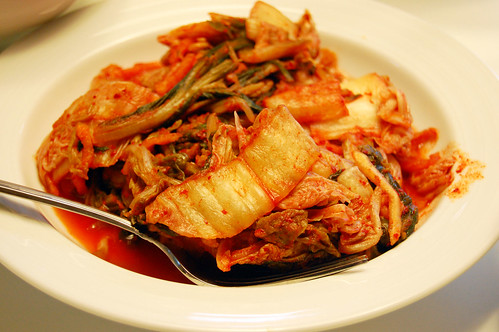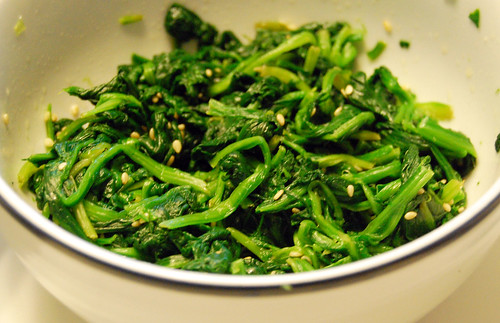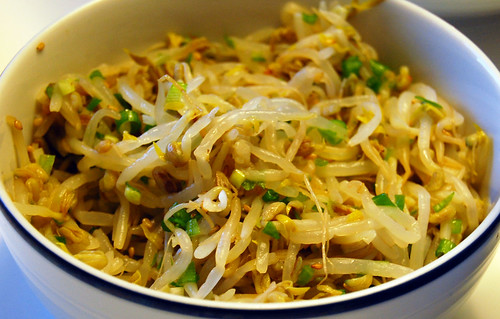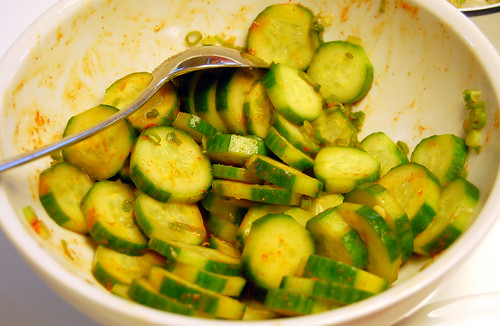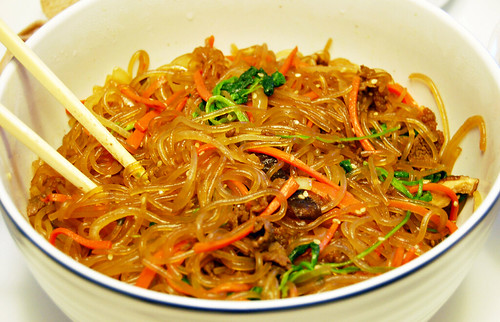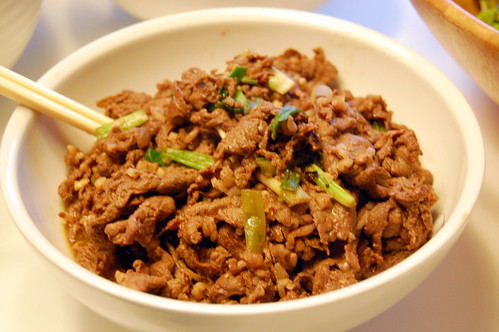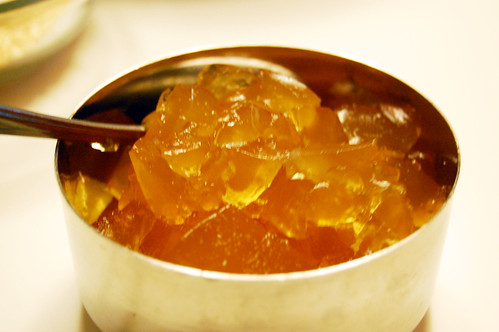
You start with some basic ingredients: flour and eggs. My first batch of pasta was just a plain egg pasta; couldn't have been easier. It took 2 eggs and 1 cup plus of flour. I'm blogging about my second attempt, which was basically just like egg pasta, except you add spinach to create a lovely green pasta. Anyway, you start with a mound of flour, creating a well in the center, where you add the eggs. Start beating the eggs (and spinach) as you would scrambled eggs, adding flour from the sides of the well as you beat. Keep adding flour slowly, because depending on numerous factors you may not need the full amount of flour. You may also need more. If the dough is still sticky even after you've used up all the flour you began with, keep adding flour a bit at a time as you knead until the dough no longer sticks to your hand.
I based the recipe and method that I used on Marcella Hazan's Essentials of Classic Italian Cooking and Canal House Cooking Volume No. 7: La Dolce Vita. They're both wonderful and I recommend them highly. I particularly enjoy how Hazan flat out states her honest opinions on various ingredients and methods.
If you want to use spinach, you'll need about 10 ounces. Clean it thoroughly so that no trace of dirt remains, and remove the stems (or use baby spinach, as I did). Get a pot and place the clean, wet leaves inside, and cook over medium heat with 1 tbsp of salt. No other water is needed. Cook for about 5 minutes or until the leaves are tender, then rinse with cold water. Using your hands, squeeze as much water out of the spinach as possible, then chop it up. It should be added to the flour well at the same time as the eggs.

Although I am a fan of using my mixer to knead dough, Hazan recommends doing it by hand, so I did. Immediately after incorporating all the starting ingredients, this is what I had. I continued to knead for about 8-10 minutes, in that time adding more flour. I started with 1 1/2 cups of flour; in the end I used about 2 cups. It all depends on the temperature and humidity of your kitchen, what kind of day it is, etc. You may use more or less.

What you want is a final ball of dough that's smooth and tacky but not sticky. The biggest mistake that people make when they make pasta at home is a dough that's too wet. A too-wet dough will be difficult to handle, and will also stick to your rollers/cutters, creating a mess to clean up.

What you need a lot of when you make pasta at home is -- space. Particularly if you're using a machine to roll and cut your pasta (which, unless you desire wider noodles such as tagliatelle or shapes such as orecchiette, I highly recommend -- you get a much more uniform result, and the pasta is thinner than a normal home cook would be able to create by hand), you're going to end up with some very long, thin sheets of pasta that need to be kept separate from one another.
First, you have to roll the pasta. Divide your dough into six parts (or three parts for every egg you used). Start the roller on the widest setting. Flatten out one of the portions of dough, then run it through the roller. Fold it into thirds as you would a letter, then press the dough around the folds so as to remove as much air as possible. Run it through again on the narrow end, fold into thirds again, and run through again, a total of three times. Lay the dough onto some dry paper towels and repeat with each portion of dough.

When all the portions of dough have gone through the widest setting, set the roller to the next setting up (narrowing the rollers). Run each sheet through. Keep going to the next setting until each sheet of pasta is the desired thickness (I stopped at the second to last setting). You'll notice as you run each sheet through the roller at the next-narrowest setting that they'll get longer and longer and longer, so make sure you have the space for them -- let them hang off the edge of your table if need be! For the ones that got really long (my dough portions weren't even), I ended up cutting in half with a sharp knife.

Once you've got your sheets of pasta at the desired thickness, wait for them to dry a bit -- this is particularly important if you want to store your pasta rather than using it right away. Hazan recommends waiting at least 10 minutes, but again it depends on your house/kitchen. I waited for about half an hour, flipping the sheets occasionally. You want the pasta to still be pliable, but dry enough that the strands/shapes won't stick together once they're cut.

Once you've reached that point, you're ready to cut! I made fettuccine. Because the dough wasn't too wet, it slid easily through the cutter, leaving no extra bits of dough behind. At this point, you can cook the pasta. Fresh pasta requires less time to cook than dry, and cook times depend on the cut. For my fettuccine, I cooked it for about 4-5 minutes to get it al dente.

For storing long noodles, Hazan recommends creating "nests" from several strands, so that they can be easily stored in an airtight container. Just let the pasta sit out at least 24 hours for the pasta to become completely dry -- otherwise it'll develop mold once you put it in storage. If you let it dry out properly, it will keep in your cupboard for months, just like store-bought dried pasta.

Be careful with the pasta once it's dry... it will be extremely brittle. According to Hazan, air drying is a natural process and the pasta will retain its original nutritional value and flavor once reconstituted (unlike what is marketed today as "fresh pasta" in the grocery stores, using artificial means to keep it soft and pliable). Fully dried pasta will take a little longer to cook than when using it fresh.

